How Does A Deadbolts Work?- Know About keypad Hacking and More!
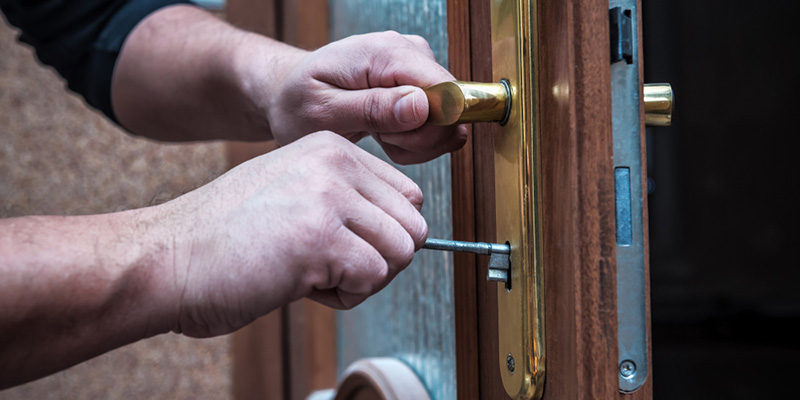
Introduction
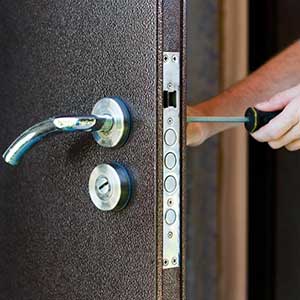
It’s normal to be anxious about your home or office security. Deadbolts can ease your anxiety because they offer the strongest protection against a break-in or burglary.
You may have used deadbolts at least once as it is very popular among homeowners.
Or, maybe as a new homeowner, you are going to use it in the future. However, if ‘how does a deadbolt work’ is your concern, then this article is for you. We have compiled here deadbolts 101! We talked about various types of deadbolts and how they Deadbolts work (including pros and cons).
So, let’s jump in. Shall we?
The Difference Between Deadbolts & Regular Lock
You may ask, why is a deadbolt different? Well, when it comes to a common lock (doorknob), you may know that it is designed as spring-loaded. So, the bolt is held in place via a spring.
If you apply force and compress the spring, the bolt will simply move. This feature made the regular lock less secure than a deadbolt. Because you can move a deadbolt only by properly rotating the cylinder. This feature made them more resistant.
Different Types of Deadbolts
If your question is ‘what are the types of deadbolts?’ The answer would be ‘many!’. Yes, there are several deadbolt types available in the market. But here you go with are the 6 most common deadbolt types and how they work.
Type 1: Single Cylinder Type Deadbolts
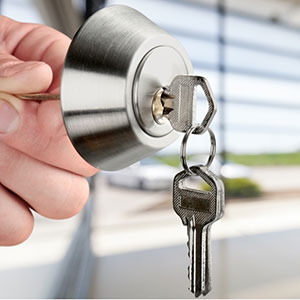 So, we are starting with the most common type of deadbolt, the single-cylinder type. On one side of single-cylinder deadbolts have a slot for a key.
So, we are starting with the most common type of deadbolt, the single-cylinder type. On one side of single-cylinder deadbolts have a slot for a key.
On the other side, they have a knob or some sort of turning mechanism like a thumb-turn.
The thumb-turn looks like a regular lever that can turn much (as a key would). Usually, this type of turning mechanism is arranged for facing indoors, where you can use it and lock the door without using keys.
To sum up all the information, a single-cylinder deadbolt features a locking mechanism that requires one key on one side.
- Efficiency
- Time-saving
- Pocket-friendly
- Easily used
- Less secure
- Power failure
- Difficult to install
- Tend to be bulkier
Type 2: Double Cylinder Type Deadbolt
The key difference between a single-cylinder and a double-cylinder deadbolt is that in the double-cylinder deadbolt, no twist knob exists. Rather, both sides of a double-cylinder deadbolt have a key cylinder.
So, the case is here that, either you are inside or the outside of your residence, you will need to open the door using a key.
- Enhanced security
- Assurance of safety
- Easy to deal with kids
- Easily used
- Not an ideal option for all doors
- Time-consuming to use
- It considered illegal in some states
Type 3: Keyless Deadbolt
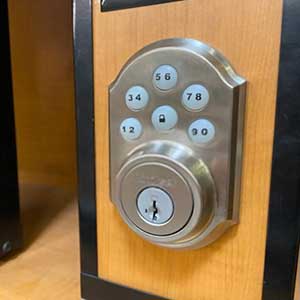 This type of deadbolt doesn’t believe in old-school locks and keys!
This type of deadbolt doesn’t believe in old-school locks and keys!
Yes, keyless deadbolt works as the premium security for your home.
The unique feature of this type is, it doesn’t have any keyhole but a keypad.
So, what will you do with the keypad?
Okay, you have to type a secret pin code (whatever you want) in the keypad.
Turns out, you don’t have to carry a key altogether!
- No need to carry keys
- Having no risk to lockout
- It’s possible to track
- There’s a possibility of hacking
- Possible to forget the code
- Costly installation
Type 4: Rim Deadbolt
In one sentence-answer, this type is a surface mounted lock. So, rim deadbolts are usually affixed or screwed to the surface of a door. Remember, this type of lock isn’t suitable for entry doors but for the interior doors. Rim deadbolts are usually seen on timber and wooden doors.
- This type is cheap to replace
- Easy to replace
- Locks automatically
- Easy to pick
- Easy to Drill or Bump
- Each time lock up
Type 5: Vertical Deadbolt or Jimmy-Proof type
Vertical deadbolts, also known as jimmy-proof, employ a vertical bolt that usually extends through a rings’ set (to secure the door). So, it is bolted to the inside face of a door. A metal plate that affixes inside the door frame (called strike plate) contains steel rings.
When the door’s closed, these steel rings interlock with some additional steel rings onto the lock itself. Vertical deadbolts are most commonly seen in commercial applications (e.g large apartments, hotel doors).
- Easy to install
- Strong security
- Tend to be bulkier
- A bit eyesore
Type 6: Mortise Deadbolt
Mortise deadbolts are usually fitted to the inside of thick doors. The reason why we mentioned ‘thick’ here is that to use this lock, your door’s minimum width has to be 1.75 inches or 45 mm.
The doorknobs or handles will turn to withdraw the latch when the door is unlocked. There is also a long rod (called through-spindle) that simply links the doorknob or handle to the lock body. When you insert the key, what exactly lets you unlock? Well, it is a threaded lock cylinder that unlocks the door.
- Paramount security
- Reliable & strong
- Attractive
- Easygoing with any kind of door
- Less secure
- A huge hole into its frame
- Difficult to install
- Expensive
Can Keypad Locks Be Hacked?- Let’s Know The Truth!
Keypad locks meet the latest technological features. And, the features attracted a fair amount of homeowners and led them to switch from traditional locks to the smart keypad locks. Keypad locks open when you punch a certain password in it.
So, you do not have to carry keys or anxiety about picking your door locks. However, there is a fear of getting your keypad locks hacked. So, that being said, can keypad locks be hacked?
How Keypad Locks Get Hacked?
Once installed plus used correctly, keypad locks can be safe as conventional door locks. And, once you add some authentication features (e.g. fingerprint, a unique key code, or facial recognition) they will be even safer than the traditional/tumbler locks.
But in case, your keypad lock is not manufactured or not programmed appropriately, they may have vulnerabilities.
In this article, we will discuss how the smart locks work and how to prevent them from getting hacked. Let’s jump in!
Let’s get to know how someone can break into smart locks.
A plain text password
If your keypad has a plain text password, someone can easily grab your password as well as gain access to your home and belongings. How?
Well, generally, Bluetooth sniffers are used to grab it. In addition, hackers can also change the admin password.
Fuzzing
So, what is fuzzing? It’s an act of sending random data permutations (repeatedly) to a program in order to reveal possible flaws or vulnerabilities. Hackers can change the bytes in its encryption key as well as keep sending these malformed data to the lock.
This ultimately causes a lock to step into an error state and consequently unlock.
Reply Attack
Here is another hacking method called reply attack. In this method, a hacker can intercept a valid data transmission from a network. After that, the hacker resent or delay it to the network.
Since the data is correctly encrypted, the network will recognize it as a valid data. After that, the hacker either will get a duplicate transaction or get a network access.
Device Spoofing
Another technique used by hackers is called device spoofing. In this method, hackers fraud a device on a network to have access. So, which device is used for this? Something like a raspberry PI.
Yes, hackers use this device to impersonate the keypad lock as well as trick its cloud server to send them its passwords. Finally, hackers send the password to the lock and unlock it.
Decompiling APK’s
Generally, APK files install as well as run app software on android operating systems. Hackers can look into any application’s source code and see whether there are any useful hints to help them gaining access to a system or not.
Moreover, the process uses decompiling an APK file into java code. For this, it becomes easy to read. A hacker can edit the code and recompile it to use in the hacking method.
How To Protect A Keypad Lock From Hacking?
Since the problem exists, definitely the solution also exists. Let’s get to know which are very important factors to protect your keypad lock from being hacked.
Proper AES Encryption
AES is a standard encryption method that is used by the U.S government. Also, it has been spread and become a standard for even the private sectors worldwide.
For all of its communication, your keypad lock should use at least 128-bit AES encryption.
Two Factor Authentication
Two-factor authentication will require two verification forms to gain access to any system. This process will make things a lot harder for hackers.
In case you want an example of two-factor authentication, suppose, you use a pin code plus a voice command. These things make sure that you have a password plus a security fob before getting permitted to enter.
Strong Password
Do not mistake using a plain text password. A keypad lock should only allow the use of longer passwords, at least 16 characters should be the password in length of.
Hackers can go through multiple hacking methods if the password is vulnerable. One of the most popular methods to make it happen is the ‘brute force attack’, it is used by a huge number of hackers.
Briefly, by this method, a hacker tries several different variations of password expecting that one of them will surely work.
Software & Applications
If you are one of them who never updates the apps on their phone, get rid of this habit. Because you will have to keep software & application tools up to date. Updates do not happen for nothing, there is a reason for it.
Yes, updates protect against any newly found security threats as well as improve the app’s functions in many ways.
Can You Unlock A Deadbolt With A Credit Card?- Let’s Find Out!
Opening your doors without a key is a life-saving process in your emergencies. The problem is bigger when you can’t even call a locksmith and need to face the breathtaking lockout alone.
In such cases, you need to know about the ways to unlock without keys. But if it is a deadbolt lock and you think ‘what about using my credit card here?’
Okay, but can you unlock a deadbolt with a credit card? No, you cannot. But it never can be the end of the world, right? We will discuss why it’s not possible and how you can do it without the help of a credit card.
Let’s dive in!
How Do Credit Cards Work To Unlock A Door?
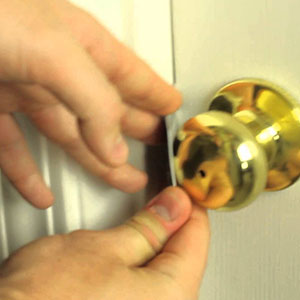 In case of any emergency, you may need to unlock your door without a key, however, we are not writing to promote a break-in to anyone else’s place. So, one of the most common ways is using a credit card to unlock doors.
In case of any emergency, you may need to unlock your door without a key, however, we are not writing to promote a break-in to anyone else’s place. So, one of the most common ways is using a credit card to unlock doors.
How does a credit card do this job? Well, there is a gap between your door and the jamb. Firstly, you need to emerge the card into that gap and continue sliding the card until it reaches the barrel of the lock.
Once you let the card in and wriggle the handle, it will go down (a little). When you put enough pressure, the doorknob will move a little. For this, the credit card will start getting more space to go through.
Thus, after a while, the door will open.
Will My Deadbolt Lock Unlock Using A Credit Card?
The answer is ‘no’. You may know about the security level of a deadbolt lock. Choosing deadbolt locks is the best to secure your place most. Deadbolt functions differently and yes, does not open using a credit card instead of the original key.
The reason is, deadbolt deadbolts appear with a spring. Also, deadbolts usually are positioned above the doorknob. This lock is designed in a way that when the door is locked, the ‘deadbolt’ (a solid bolt) will emerge into a hole above the latch (that creates a secondary lock). This feature made deadbolts a more effective lock.
This is why deadbolts are more secure than regular locksets. However, for your kind information, a credit card will also not unlock any electronic locksets which contain any entry pads. Only the specific password or the original key will unlock them.
The Ways of Unlocking Deadbolts Without A Key
You can’t unlock the door using a credit card that doesn’t mean you can’t pick a deadbolt in emergencies. There are ways to escape from accidental lockouts. Let’s get to know in detail.
Using Bobby Pin
To pick a deadbolt lock, this one is the most commonly used tool. All you need to make it happen, only two bobby pins. Next, go through these simple steps below:
- Bend one of the bobby pins and give it L- shape.
- Bend the other bobby pin and make it completely unfolded.
- Insert the L-shaped bobby pin into the keyhole and apply sideways pressure on the pin.
- Insert the unfolded pin inside the top of the lock as well as move it back and forth.
- Continue rotating the L-shaped pin on the bottom of the lock, it will unlock within a few minutes.
Using A Drill Machine
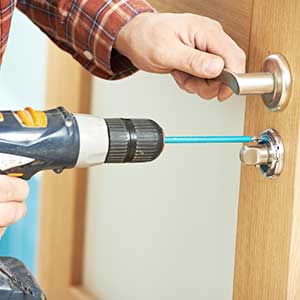 Another efficient way to open up your deadbolt lock is to use a drill machine. However, the main thing is whether you can manage a drill machine in your emergency or not.
Another efficient way to open up your deadbolt lock is to use a drill machine. However, the main thing is whether you can manage a drill machine in your emergency or not.
If you can manage, then follow the to-do process. Hold a drill machine on the lock and start drilling.
After a few minutes, the lock will be unlocked. But remember, the drilling process requires experience. So, if it is your first time, then stay careful.
Another remembrance, drilling will utterly destroy your lock tumblers. So, afterward, you have to install a new lock.
Using Paperclips
Do you think paperclips are only used for clipping the papers? No, there’s more. You can use them to unlock deadbolts. Since paperclips are anytime found in our backpacks, so you will find them in emergencies.
So, to go through this process, you will need two paper clips (like the bobby pin method). Then just wading through these steps will be your job:
- Bend one paper clip straight.
- Insert the paper clip inside the lock.
- Bend the second paperclip slightly (not straight).
- Insert the second clip above the first one.
- Jiggle the lock for a while.
Thus, the door will open.
Using Bump Keys
‘Lock bumping’ is a popular way to unlock deadbolts without the original keys. It’s been used for decades. You can purchase a bump key set from Walgreens, Walmart, etc. The steps you need to follow are:
- Insert a bump key into the deadbolt.
- Now, use a screwdriver to hit the end of that bump key. Worth mentioning, you can use any sturdy-ended tool instead of a screwdriver.
That’s all you have to do. The force will let the key turn and thus, the door will unlock.
Using a Tension Wrench
In this method, you will need a tension wrench and a pick itself. What’s a pick? Well, it is a long piece of metal or plastic that fits into the keyhole easily. The steps you will go through are:
- Insert the end part of the wrench into the keyhole.
- Take the pick and insert it to the top of the lock.
- Give pressure on the wrench and keep lifting the pick.
After a while, you will be able to unlock it.
- Best Deadbolts to Secure Your Home
Conclusion
That’s all we stored for you. This time, you surely are no longer confused about how a deadbolt works. As we left no stone unturned, hopefully, we could provide you with everything needed regarding this topic.
It’s good for you that you are concerned about the security most. Deadbolts meet all the demands you have to secure your place. Someone can’t just use a knife or something like that to unlock the door if you use a deadbolt. Moreover, they feature a locking mechanism that can resist boring, battering, or any kind of physical attack.
Before you are going to choose a lock, think about ins and outs of it to ensure the most secure building.
We would like to give pieces of advice to you- be very careful in maintaining the keypad lock, buy the locks from reputed companies, and do not compromise with the best product even if it’s expensive. Good Luck!




